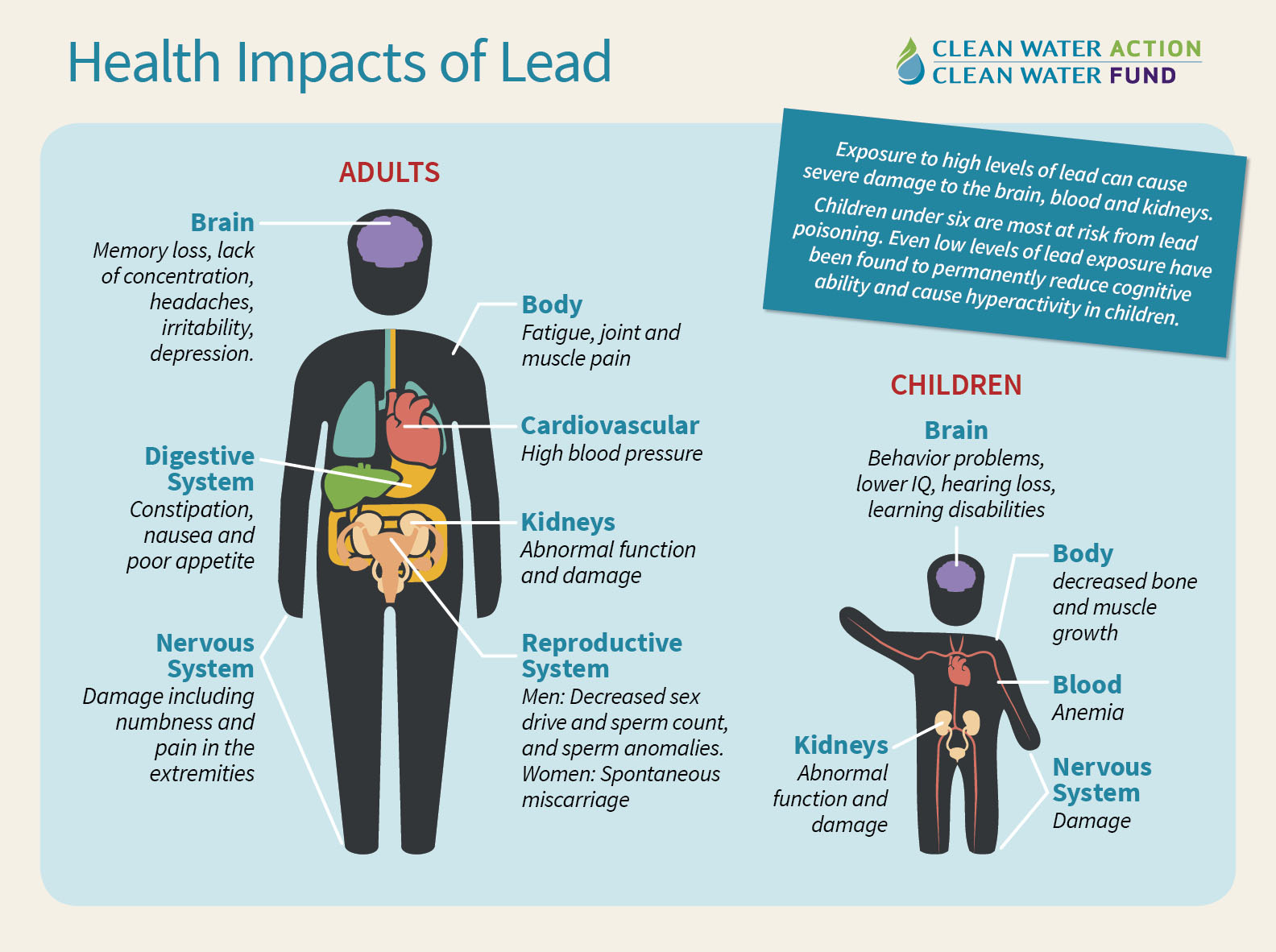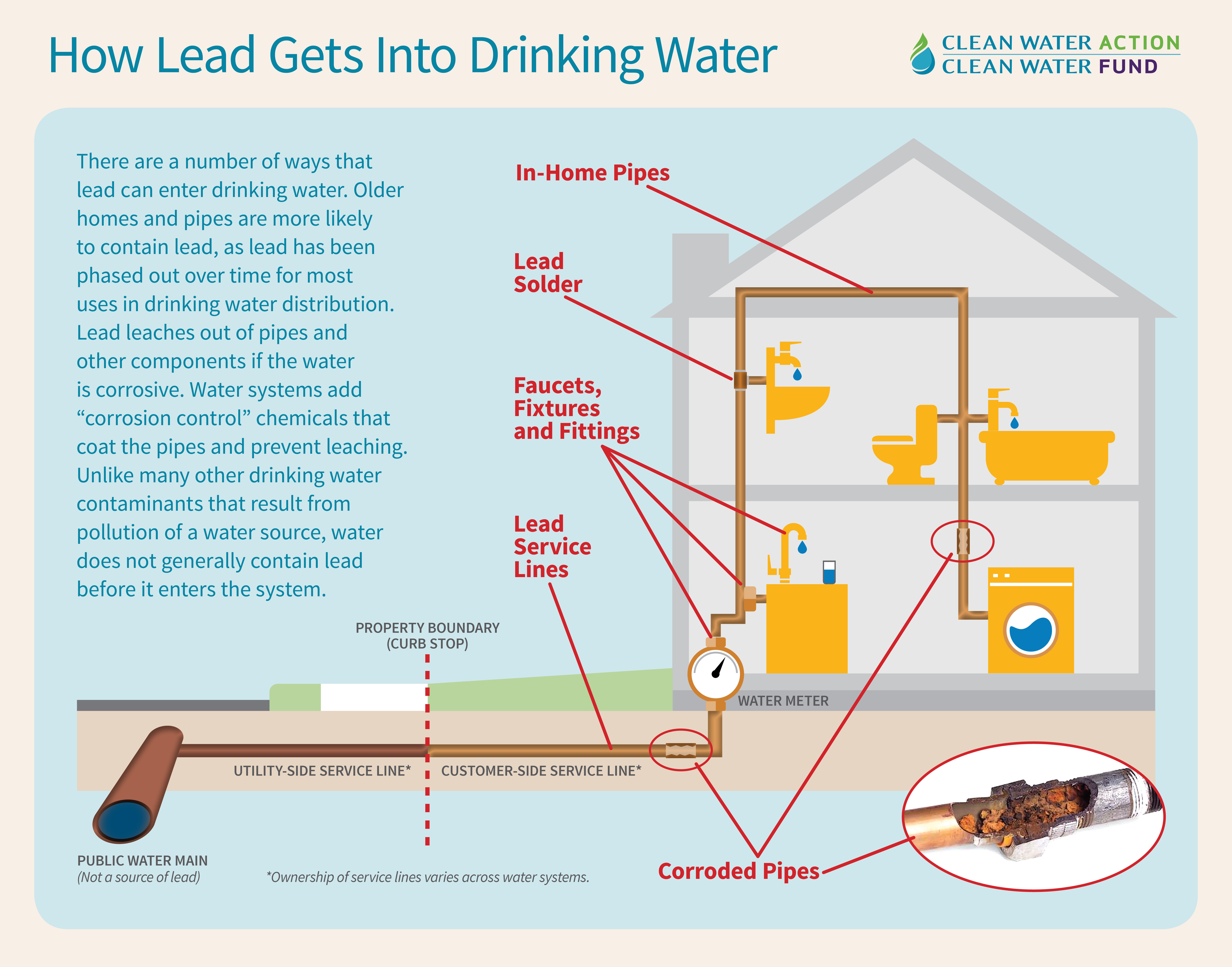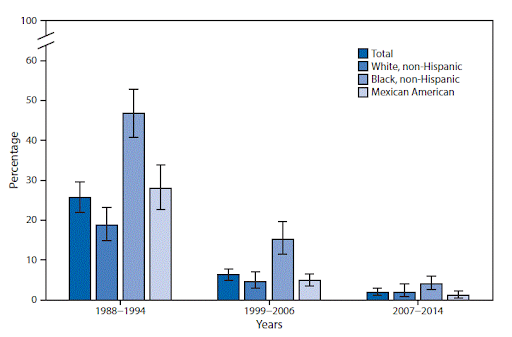
Lead is a highly poisonous metal and can affect almost every organ in the body and the nervous system, especially in children who are still growing and developing. Water in Massachusetts starts out lead free, but when the water travels through water service lines and internal plumbing fixtures made of lead, it collects lead particles that travel with the water, out of the tap, and directly into our bodies. Children under six and pregnant people are the most vulnerable to lead exposures with children potentially suffering permanently reduced cognitive ability. However, scientists and doctors all agree that there is NO safe level of exposure for children or adults.
Clean Water Action and Clean Water Fund are working in key Massachusetts communities to help residents identify buildings and residences that still have lead service lines, learn how to protect their families from lead exposure, and access lead service line replacement programs to #GetTheLeadOut.
Learn more about how Clean Water Action is fighting to ensure that every lead service line in Massachusetts is identified and removed, take action to advocate for state legislative action on lead, or read on for resources to protect your own household from lead in drinking water.

What is a lead service line (LSL)?
Your service line is the pipe that connects your home or apartment building to the water main for the street. While Congress banned lead service lines in 1986, many residences in Massachusetts were built before that ban, and unfortunately, many homes are still served by lead service lines. The portion of the service line that runs from the water main to the sidewalk is public, meaning it is the responsibility of the municipality or utility to maintain or replace it. The portion of the service line running from the sidewalk into your home is private, meaning it is the homeowner or landlord’s responsibility.

How do I determine if my residence has a lead service line?
Part of the problem with lead service lines is that municipalities and states don’t know where they all are yet. Changes to the federal EPA Lead and Copper Rule will require that Massachusetts communities submit complete records of LSLs by 2024. Until then, every time a resident either contacts their local water supplier to make a lead service line inquiry OR goes into their basement to look for an LSL themselves, they are contributing to that larger solution.
To investigate whether or not YOUR household has an LSL, first contact your municipal water supplier and ask. To find the number to call, do an online search for “YOUR TOWN water department.” Have a pen and paper ready to take notes on your call.
Sample call script: ''Hello, I live at [YOUR ADDRESS] and I am wondering if you could tell me if the water lines to my property are lead pipes? Do you provide free lead testing for our drinking water? How can I schedule testing for my home? Are there any grants or loans available if I do end up having a private side lead service line that I want replaced?”
If your municipal department is not sure whether or not you have a lead service line, and you have access to your basement, you can inspect the pipe yourself to try and determine what material it is. The EPA offers a step by step guide to locating and checking your service line.
How can I access lead service line replacement for my home or apartment?
Unfortunately, it is often the financial responsibility of the property owner to replace the private portion of a lead service line. This typically costs between $3000 and $7000. However, more and more municipalities are offering full or partial financial support to property owners to replace their portion of a lead service line. When you call your municipal water department, be sure to ask what grants or loans are available in your community for lead service line replacement.
Clean Water Action believes lead free drinking water is a human right. We are fighting to make sure that all residents of all communities aren’t stuck with LSLs simply because they don’t have the financial ability to replace them. Federal legislation including the Bipartisan Infrastructure Act and the American Rescue Plan Act designated billions of dollars of federal spending to replace lead pipes. We are working with municipalities to ensure they can access those funds. Learn more about Clean Water’s fight to #GetTheLeadOut of Drinking Water!
How can I reduce my family’s exposure to lead in drinking water?
Until you are able to have your lead service line fully replaced, there are steps you can take to protect your family from lead in drinking water.
- Run your water before drinking or cooking. The longer water sits in pipes, the more lead it may contain. When water has not been used for 6 hours or more, running water until it becomes as cold as possible can help ensure you are not using water that has been sitting in the pipes. If you’re worried about wasting water (so are we!) you can collect the water that you let run and use it to wash your car, water non-edible plants, or anything else that doesn’t involve drinking the water.
- Use your sink’s cold water for drinking, preparing food, and cooking. The cold water is less likely to contain lead. Never add warm water to baby formula.
- Boiling water will not remove lead.
- Choose the right filter. Only specific products are designed to reduce lead contamination. If you choose to use filters, consult your water system and learn more about products here.
How can I learn more about lead in water?
MassDEP lead information
EPA lead in water information
Lead Service Line Collaborative
Clean Water Action and Clean Water Fund are Fighting to #GetTheLeadOut!
Clean, safe drinking water is an issue of justice. Kids’ exposure to lead in the womb and early childhood affects their development and can lead to decreased attention span, hyperactivity, and decreased IQ. These impacts last a lifetime and make it harder for them to succeed in the classroom. The risks of lead exposure are not limited to children. Adults exposed to lead exhibit irritability and aggressive behavior, and lead negatively impacts virtually every system of the body. There is no safe level of lead exposure.
But lead exposure is not an evenly distributed threat. Because the cost of replacing lead service lines has been mostly shouldered by municipal governments and individuals, wealthier communities and residents are more likely to have their lead service lines identified and replaced than residents with fewer financial resources. This leads to a persistent racial gap in access to clean, safe drinking water with Black children more likely to have elevated blood lead levels than white children, even as the total number of children exposed to lead has dropped. This is environmental racism.
Percentage of Children Aged 1-5 with Elevated Blood Lead Levels by Race/Ethnicity

Clean Water Action is fighting to change this dynamic by organizing directly with residents and municipal governments in environmental justice communities to access funding for lead service line (LSL) replacement programs. Access to safe, clean drinking water should not depend on wealth. Nationally, we are a founding member of the Lead Service Line Replacement Collaborative, an effort to speed up voluntary LSL replacements in communities across the country.
In Chelsea, Clean Water Action partnered with GreenRoots to support the City in receiving zero-interest loans for lead service line replacements. This enabled Chelsea to replace more LSLs on a faster timeline, including replacing the public and private sides of the LSL, at no cost to the property owner. We then worked together on a grassroots organizing campaign to help residents learn about the hazards of lead, identify existing lead service lines, and opt in to having their lead service line replaced. This campaign included community meetings with presenters in both English and Spanish, multilingual lead hazard materials development, and a bilingual door to door canvassing effort to help map out the locations of existing LSLs and sign up residents for the replacement program. We also engaged residents to advocate at the local, state, and federal level for more resources to #GetTheLeadOut.
In Malden, we supported Representative Katherine Clark’s efforts to secure $3.36 million of federal funds in March 2022 that will be put towards replacing both the public and private sides of LSLs. As in Chelsea, the key to success is community based outreach to residents, including involving trusted community members, to ensure that folks understand the health threats of lead, know how to protect their family from lead in drinking water, and opt in to full lead service line replacement work at their residence. Clean Water Action has held multiple public education events, gone door to door to speak with residents, and partnered with local grassroots groups to guarantee that knowledge about lead and drinking water becomes a part of the local community culture in Malden.
The passage of the Bipartisan Infrastructure Act and the American Rescue Plan increases the federal resources available for locating, inventorying, and replacing lead service lines. Clean Water Action and Clean Water Fund will continue to fight to make sure that historically overburdened and under-resourced communities can access these funds, so that everyone can enjoy clean drinking water.
Take action! Clean Water Action is currently on legislation addressing lead in drinking water in Massachusetts. Send a message to your legislators!
- An Act ensuring safe drinking water at schools - H.851 (Lipper-Garabedian) / S.526 (Lovely): This bill requires school and childcare facilities to test their drinking water outlets for lead and mandates remediation if elevated lead levels are found. The bill authorizes remediation funding under the state Water Pollution Abatement Revolving Fund.
